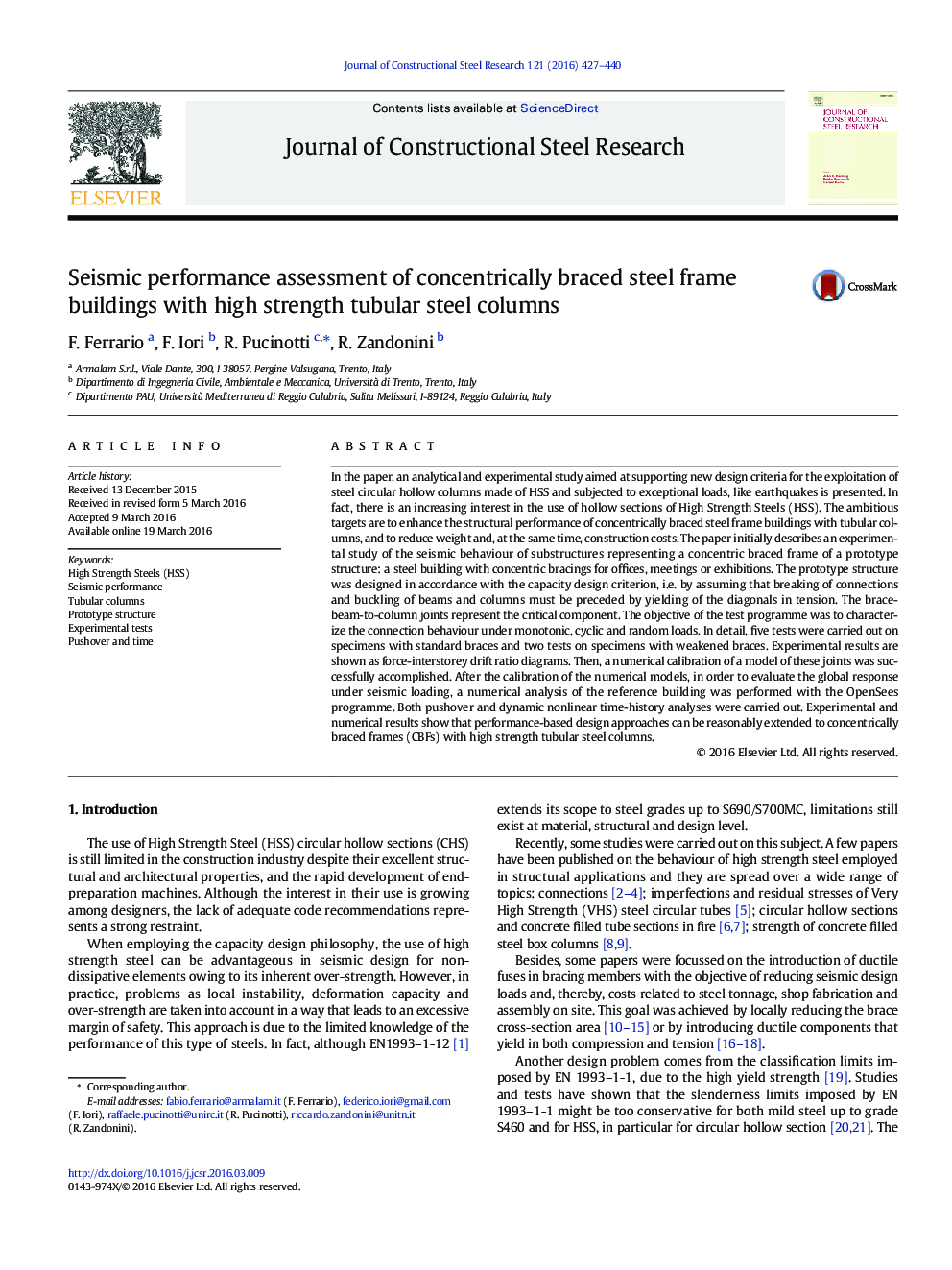| Article ID | Journal | Published Year | Pages | File Type |
|---|---|---|---|---|
| 284245 | Journal of Constructional Steel Research | 2016 | 14 Pages |
•Analytical and experimental study of steel circular hollow columns made of HSS and subjected to earthquakes is presented;•A prototype structure was designed in accordance with the capacity design criterion;•Seven tests were carried out and a numerical calibration of a model of joints was successfully accomplished;•Both pushover and dynamic nonlinear time-history analyses were carried out of the reference building;•Results show that performance-based design approaches can be extended to CBFs with high strength tubular steel columns.
In the paper, an analytical and experimental study aimed at supporting new design criteria for the exploitation of steel circular hollow columns made of HSS and subjected to exceptional loads, like earthquakes is presented. In fact, there is an increasing interest in the use of hollow sections of High Strength Steels (HSS). The ambitious targets are to enhance the structural performance of concentrically braced steel frame buildings with tubular columns, and to reduce weight and, at the same time, construction costs. The paper initially describes an experimental study of the seismic behaviour of substructures representing a concentric braced frame of a prototype structure: a steel building with concentric bracings for offices, meetings or exhibitions. The prototype structure was designed in accordance with the capacity design criterion, i.e. by assuming that breaking of connections and buckling of beams and columns must be preceded by yielding of the diagonals in tension. The brace-beam-to-column joints represent the critical component. The objective of the test programme was to characterize the connection behaviour under monotonic, cyclic and random loads. In detail, five tests were carried out on specimens with standard braces and two tests on specimens with weakened braces. Experimental results are shown as force-interstorey drift ratio diagrams. Then, a numerical calibration of a model of these joints was successfully accomplished. After the calibration of the numerical models, in order to evaluate the global response under seismic loading, a numerical analysis of the reference building was performed with the OpenSees programme. Both pushover and dynamic nonlinear time-history analyses were carried out. Experimental and numerical results show that performance-based design approaches can be reasonably extended to concentrically braced frames (CBFs) with high strength tubular steel columns.
